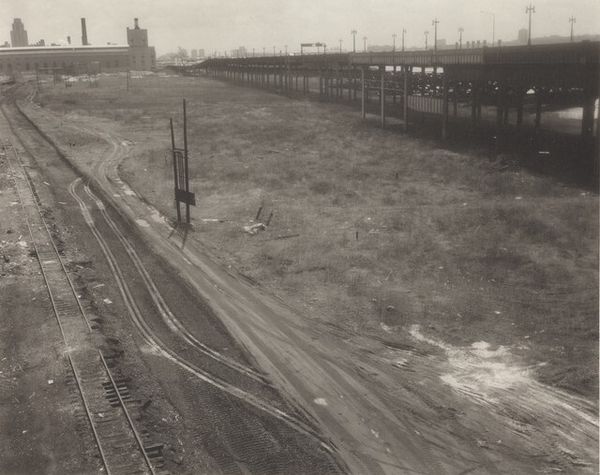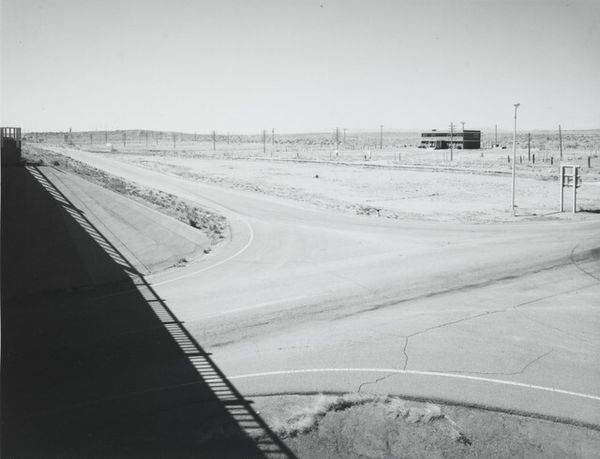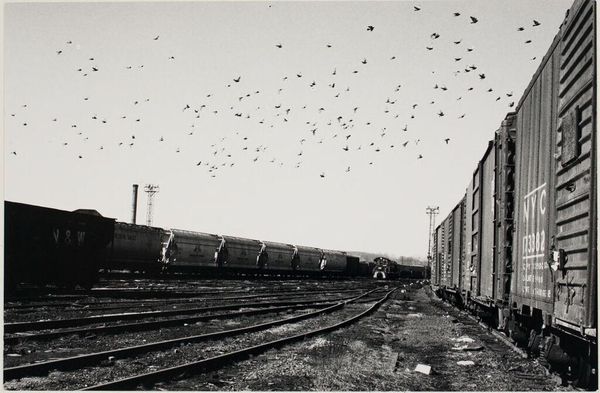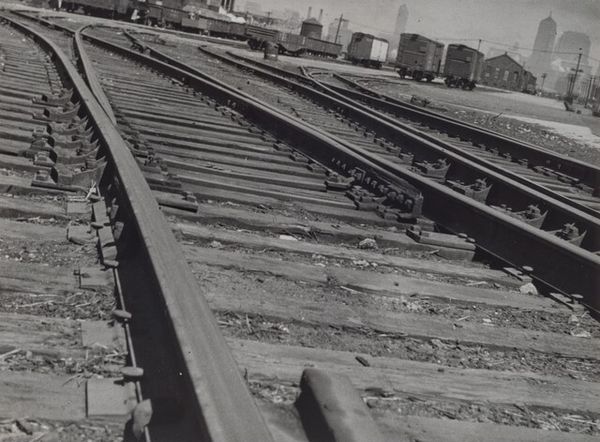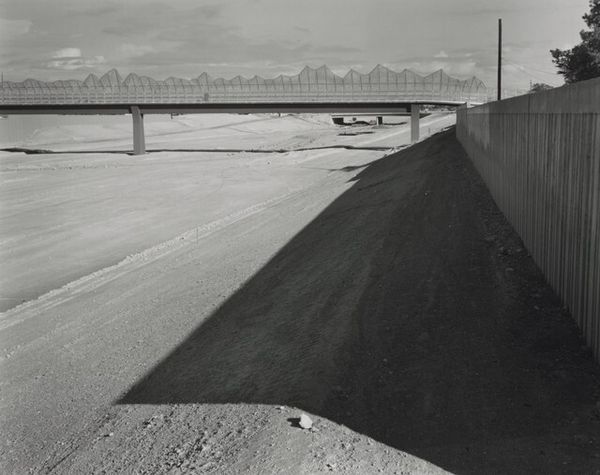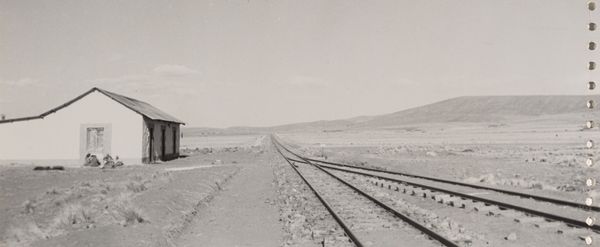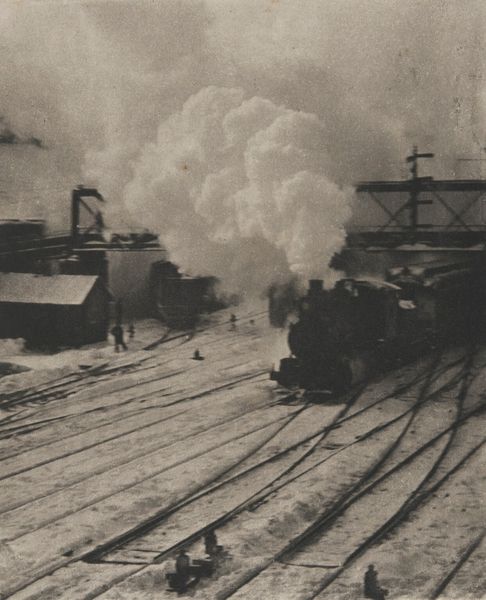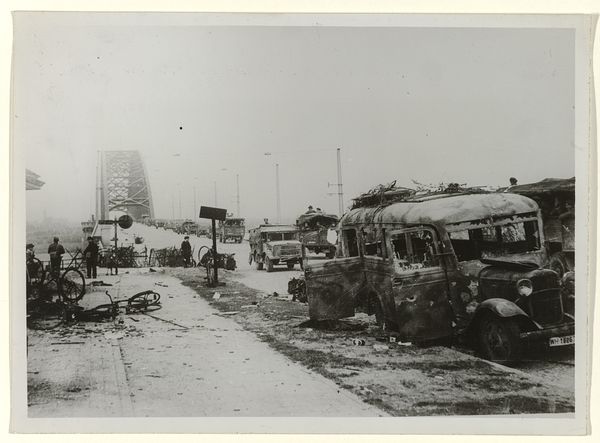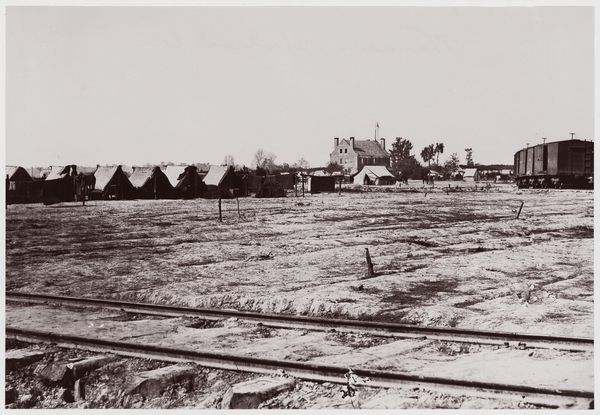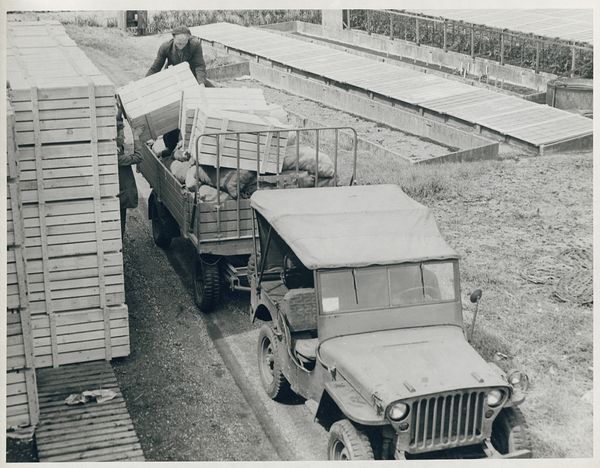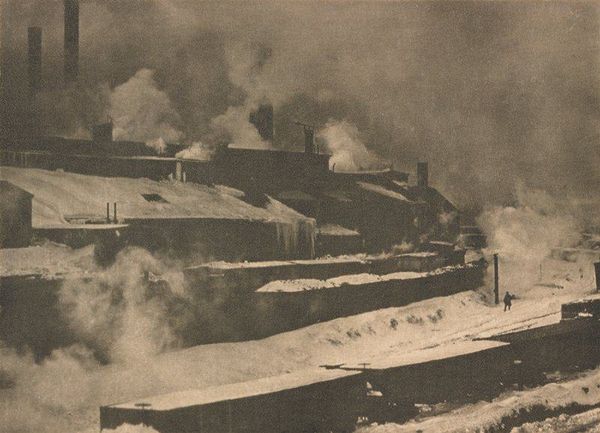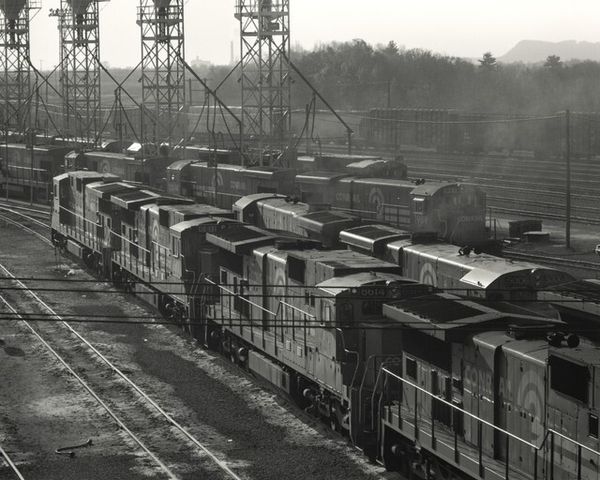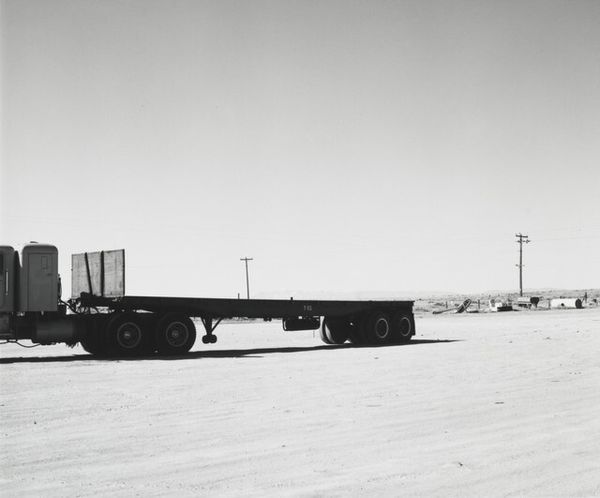
Hump and Classification Bowls at Selkirk Yard, Bethlehem, New York 1991
0:00
0:00
photography
#
still-life-photography
#
landscape
#
photography
#
geometric
#
black and white
#
monochrome
#
monochrome
Dimensions: image: 24 × 28.5 cm (9 7/16 × 11 1/4 in.) sheet: 27.9 × 35.5 cm (11 × 14 in.)
Copyright: National Gallery of Art: CC0 1.0
Editor: This photograph, "Hump and Classification Bowls at Selkirk Yard, Bethlehem, New York," was taken by James Welling in 1991. I'm immediately struck by how desolate it feels. What do you see in this piece beyond its industrial landscape? Curator: It's desolate, yes, but I'd push us to think about what that desolation represents. The black and white emphasizes the stark geometry of the railyard – a system designed for movement and connection. Yet, it’s eerily still, almost lifeless. I see this work as an intersection between the personal and the socio-economic implications of industrialized labor. Editor: I see that stillness too and wonder if it is intended to evoke a sense of longing? Curator: Possibly, and I encourage you to see it as also more layered than that. Who is doing the longing, and what are they longing for? The railyard speaks to American industrial power, which is often directly tied to the exploitation of both people and the environment. The beauty of geometric repetition alongside the biting cold makes me wonder about the promise of progress against its actual costs. Is this an elegy? Or perhaps an indictment? Editor: That's fascinating. So, the choice to focus on this industrial landscape isn't just about the aesthetic, but also a comment on labor and perhaps even the unattainability of the "American Dream?" Curator: Exactly! And consider that Welling, though not explicitly a social activist, engages in this quiet yet poignant critique. He invites us to contemplate not just what we see, but the unseen forces at play: power structures, economic inequalities, and the human impact of industrialization. It’s about prompting a deeper inquiry. Editor: This definitely reframes how I look at seemingly straightforward photographs now. I see how important context can be. Curator: And I feel that considering historical background can create a more enriched, nuanced interpretation of any piece of art.
Comments
No comments
Be the first to comment and join the conversation on the ultimate creative platform.
